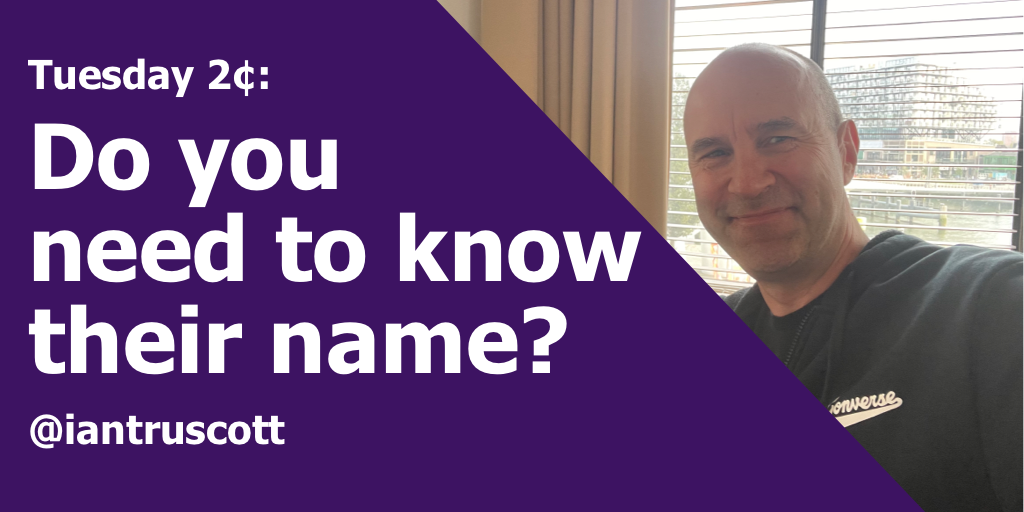Inspired by something a little more international this week, not a van or a pub, but one of my favourite podcasts….
On last week’s “This Old Marketing” podcast (episode 343), of which I am a fan, the hosts Robert Rose and Joe Pulizzi were discussing creator coins/social tokens. And, summarising wildly here for the purposes this short post – you can can own, trade, get community perks, do a bunch of other stuff with them and critical to this conversation – never share your real name.
Their discussion was whether this meant the audience was truly addressable, as this anonymous member, despite being bought into your community with a social token, could be anybody.
(If you are interested in creator coins/social tokens, try this article by Michael Stelzner).
For me the social token bit wasn’t the bit that inspired me here, it was a good discussion that led to the age-old debate about consumer data gathering and personalisation – do you need to know their name?
Or, more specifically, when do you need to know their name?
And more generally, what do you really need to know about your audience and when?
I’m in B2B so looking through that lens, this conversation reminds me of two things, yes, the data gathering part, but also how we approach audience profiles and personas.
If you are defining a persona, what attributes that you assign to them are genuinely useful?
And when I mean useful, is it useful to know this attribute when creating content to address them and are these things addressable, i.e., could you recognize a visitor if they had the attribute “reads the New York Times” and serve them different content? Maybe this is useful, but test it first before you build a billion slightly different personas.
I’ve written about this before, about defining personas around needs – that understanding the needs of the segment of your audience is more important than, say, job title. You may have a risk adverse CMO that has a lot in common with a CIO that needs the same reassuring content or messaging.
I’ve digressed a little, but I see audience needs as linked to behaviour and intent, if you can find and serve content to meet your audience needs, through their behaviour in consuming that content they could be signalling intent.
For example, lets say you are B2B technology vendor, you know that at a specific part of a buyers journey the prospective client will look at the technical detail of integration or migration. You understood the need, created the content and now consuming that content is a signal of intent to buy.
And, intent is way more important than knowing their name.
Like Joe and Robert talking about creator coins and social tokens, a community may not know the names of all the people with the token, but it’s a good signal that they want to be active in that community, which is the behaviour creator coins and tokens want to encourage.
So, back to my B2B example – do you need to know their name?
Maybe not until they are ready to buy, but for now, understanding this intent , progressively profiling, is way more valuable.
And, as they get closer to you and want to buy, that will be the time they will say their name.
That’s my 2 cents for this week, if you read this and follow me, you are probably already familiar with This Old Marketing, if not, give it a go.
Fancy more of this?
Subscribe to my Rockstar CMO Newsletter

I’m a 3xCMO, now a marketing strategy advisor and podcast host at Rockstar CMO. Although, I’m not a rock star, but a marketing leader, strategist, content marketer, columnist, speaker, industry watcher, and creator of ART (Awareness, Revenue, and Trust) for the companies I work with. But most of all, I am an enthusiastic tea drinker.
You can find me on LinkedIn, Twitter, or now Threads! – or listen to my weekly podcast at Rockstarcmo.com
The half-baked thoughts shared on this blog may not reflect those of my employer or clients, and if the topic of this article is interesting or you just want to say hello please get in touch.
